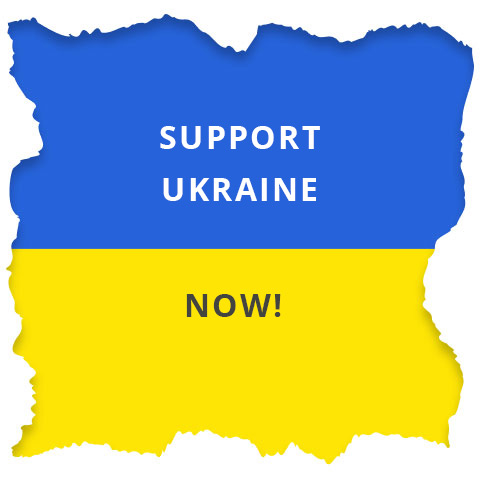“It did not shock me”, Vadym Siedykh says about the beginning of the Russian invasion of Ukraine on February 24th, 2022. During the first days, he didn’t fully realize what was going on.
Vadym comes from Kurakhove, a small town of 20,000 in Eastern Ukraine, only a few kilometres from Donetsk. The region has become used to some degree of fighting since Russian separatists attempted to take control starting in 2014. On and off, there’s been combat activity and gunshots ringing out.
At the end of February, though, it’s getting considerably worse, recounts the 39-year-old, but he only learns through the news that Russia has started a large-scale invasion of Ukraine.
The violence quickly takes on a new dimension. Kurakhove turns into a war zone. Temporarily, the town is only separated from the front line by a few kilometres.
Conditions are becoming untenable for the people who chose to stay behind in this industrial town, Vadym explains: “There was no more water, no more food, no more drinks.”
What’s more, people were queueing in front of ATMs, but there was no more money. “It kept getting worse. It was the slow death of our town.” The town was almost completely surrounded. The Russian forces only left a narrow humanitarian corridor. Citizens were hustling to get out of the town.
Vadym holds out for 40 days, then decides to flee as well. When he boards the bus to Kramatorsk, he only carries a suitcase, a rucksack, and a package. An overcrowded refugee train takes him to Lviv in western Ukraine. He knows the town close to the Polish border: it’s where he lived and worked in a centre for assisting people with addictions for two years.
Accommodation is a scarce commodity in Lviv.
Since the beginning of the war, the town has become a hub for refugees. Vadym gets a room in a student hall of residence, where he can stay for four months. Eventually the accommodation is taken up by students again and the refugees need to move out.
At this stage, Vadym doesn’t have a clear destination in mind, but because he met some German volunteers who brought clothing for refugees, he decides to move on to Germany.
For the 39-year-old it is a scary adventure. He’s never been abroad, nor does he have a passport, nor does he speak a foreign language. On top of that, his capacity to help himself is limited. He lost half of his left arm and some fingers on his right hand in a work accident two years ago.
At the station he merges with the crowds of refugees.
The initial destination is Przemysl in Poland. One week later, he moves on to Berlin first and then to a central refugee reception facility in Hanover, from where he is allocated to Wolfenbüttel.
“The journey wasn’t so bad”, he remembers when he recounts the story of his escape in the refugee accommodation “Komm”. “It was worst when the war began.”
Vadym says almost all residents of Kurakhove have left the town. He leaves open whether he will ever return. He would like to have a prosthesis, he says. “’And I would like to learn how to do something useful here.”
We organise accommodation, events and much more for refugees from Ukraine. Many families are in need of a new home. We provide a platform for Ukrainians to tell their stories.
We organise accommodation, events and much more for refugees from Ukraine. Many families are in need of a new home. We provide a platform for Ukrainians to tell their stories.

Our association for the correct receipt of donations is: Chancen Geben e.V. We are very committed to reconstruction in Ukraine.
Account holder:
ChancenGeben e.V.
IBAN
DE68 2709 2555 5871 9830 00
BIC
GENODEF1WFV
Intended use
Faces of Ukraine

Please note:
Monetary donations are tax deductible and up to € 300 the tax office does not require a donation receipt, but they may be supported by a transfer voucher/account statement.
We can issue a donation receipt for donations of €300 or more.
To do this, please send us a separate email with the subject “Request for a donation receipt” to: kontakt@chancengeben.org. Please include your first and last name, address, donation date and amount donated, as well as a screenshot of the transfer.
The association pursues exclusively and directly charitable purposes within the meaning of the “Tax-privileged purposes” section of the tax regulations.
Henning Kramer
Am Lecheln Holze 9
38302 Wolfenbüttel
Phone: +49 5331 703 35 95
Email: kontakt@gesichter-der-ukraine.de